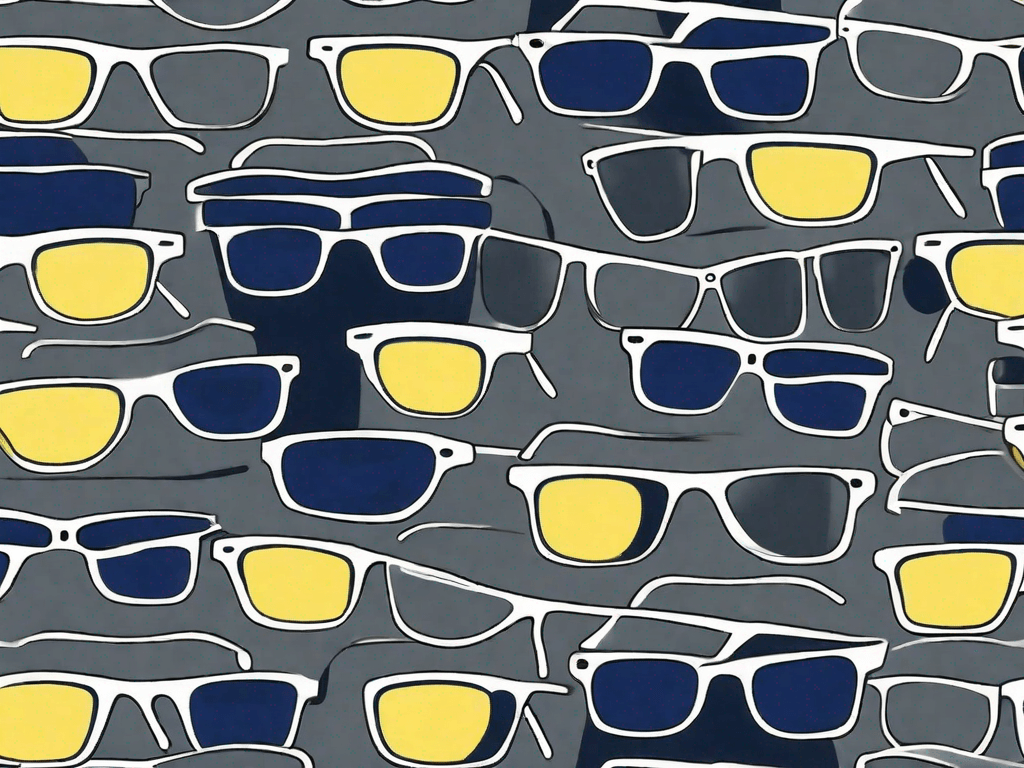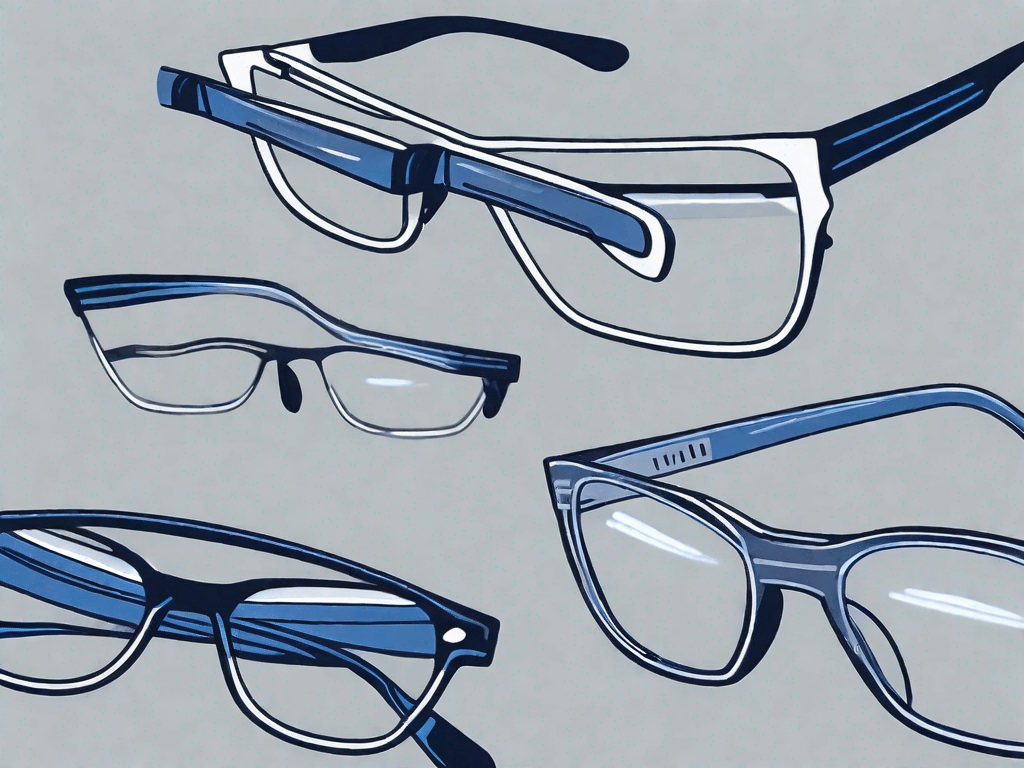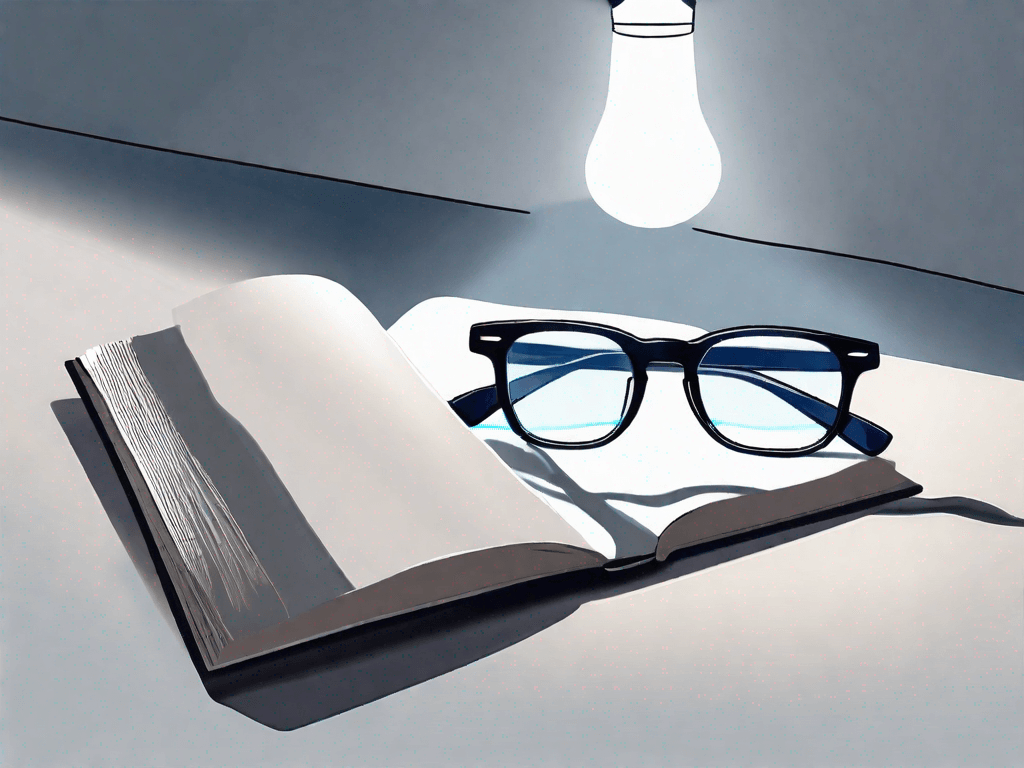Do Yellow Glasses Block Blue Light?
In today's digital age, many of us spend hours each day staring at screens, whether it's on our computers, tablets, or smartphones. With increased screen time comes increased exposure to blue light, which has raised concerns about its potential negative impact on our eyes. To protect our vision, various solutions have been introduced in the market, one of which is yellow glasses. But do yellow glasses block blue light effectively? Let's dive into the subject and find out.
Understanding Blue Light
Before we explore the effectiveness of do yellow glasses block blue light, it's important to understand what blue light is and its potential impact on our eyes. Blue light is a high-energy visible light that is emitted by electronic devices, as well as natural sources such as the sun. While some exposure to blue light is necessary for our circadian rhythm and overall well-being, excessive exposure can lead to problems.
What is Blue Light?
Blue light is a short-wavelength light that falls within the visible light spectrum. It has a higher energy level compared to other colors in the spectrum, which means it can penetrate deeper into our eyes. The primary source of blue light is the sun, but it's also emitted by LED screens, fluorescent lights, and electronic devices.
When blue light enters our eyes, it stimulates special cells in the retina called ganglion cells. These cells play a crucial role in regulating our sleep-wake cycle, also known as the circadian rhythm. Exposure to blue light during the day helps boost our alertness and mood, while exposure at night can disrupt our sleep patterns.
The Impact of Blue Light on the Eyes
Prolonged exposure to blue light can cause eye strain, dryness, and discomfort. Some studies suggest that excessive blue light exposure may increase the risk of macular degeneration, a leading cause of vision loss. Macular degeneration occurs when the central portion of the retina, called the macula, deteriorates over time. This can result in blurred or distorted vision, making it difficult to read, recognize faces, or perform other daily activities.
In addition to macular degeneration, blue light exposure has also been linked to digital eye strain, also known as computer vision syndrome. Symptoms of digital eye strain include headaches, blurred vision, neck and shoulder pain, and dry eyes. These symptoms can be particularly bothersome for individuals who spend long hours in front of screens, such as office workers or students.
Sources of Blue Light Exposure
With the increasing use of electronic devices, our exposure to blue light has skyrocketed. Whether it's working on a computer, scrolling through social media, or binge-watching our favorite shows, we are constantly bombarded with blue light. Furthermore, energy-efficient LED lights that are commonly used in our homes and offices also emit blue light.
It's not just the quantity of blue light that matters, but also the timing of exposure. Research suggests that exposure to blue light in the evening and at night can disrupt our sleep patterns by suppressing the production of melatonin, a hormone that regulates sleep. This is particularly concerning considering the prevalence of smartphones and tablets in the bedroom, where many people use these devices right before going to bed.
It's important to note that not all blue light is bad for our eyes. As mentioned earlier, exposure to blue light during the day is beneficial for our circadian rhythm and overall well-being. However, it's the excessive and prolonged exposure, especially at night, that can have negative effects on our eyes and sleep.
The Science Behind Yellow Glasses
Now that we have a better understanding of blue light and its potential impact, let's delve into the science behind yellow glasses. These glasses are specifically designed to block or reduce the amount of blue light that reaches our eyes. But how do they work?
The Color Spectrum and Light Blocking
The color of light is determined by its wavelength. Blue light has a shorter wavelength and higher energy compared to other colors. This high energy can have various effects on our eyes and overall health. Yellow glasses use a special lens tint that selectively filters out blue light wavelengths while allowing other colors to pass through. By doing so, they can effectively reduce the amount of potentially harmful blue light that reaches our eyes.
When light passes through a medium, such as a lens, it can be absorbed, reflected, or transmitted. In the case of yellow glasses, the lens tint is designed to absorb blue light. The tint acts as a barrier, preventing a significant portion of blue light from entering our eyes. This absorption process is crucial in protecting our eyes from the potential harm caused by excessive blue light exposure.
How Yellow Glasses Work
Yellow glasses typically have an amber or orange-yellow tint, which helps to absorb blue light. This tint acts as a barrier, preventing a significant portion of blue light from entering our eyes. The specific wavelength range that is blocked may vary depending on the manufacturer and type of glasses, but most yellow glasses target the harmful blue light around the 400-450 nanometer range.
When blue light enters the yellow lens, it encounters molecules within the lens material that are capable of absorbing specific wavelengths. These molecules are designed to absorb blue light, effectively reducing its intensity before it reaches our eyes. This absorption process is what gives yellow glasses their distinctive color and allows them to provide protection against blue light.
It's important to note that while yellow glasses can help reduce blue light exposure, they do not block all blue light. Some blue light may still pass through the lens, albeit at a reduced intensity. Therefore, yellow glasses should be seen as a tool to minimize blue light exposure rather than completely eliminate it.
Yellow glasses can also enhance contrast and improve visual clarity, especially in low-light conditions. The amber or orange-yellow tint can help filter out certain wavelengths that can cause glare, leading to better visual perception and reduced eye strain.
The science behind yellow glasses lies in their ability to selectively filter out blue light wavelengths, providing a protective barrier for our eyes. By absorbing a significant portion of blue light, these glasses can help reduce the potential harm associated with excessive blue light exposure. Whether you're using them for screen time, outdoor activities, or simply as a preventive measure, yellow glasses offer a valuable solution in our modern digital age.
Effectiveness of Yellow Glasses in Blocking Blue Light
Now, the burning question remains – are yellow glasses truly effective in blocking blue light? While there is some evidence to suggest their effectiveness, it's important to understand the limitations and consider other factors.
Research on Yellow Glasses and Blue Light
Several studies have shown that yellow glasses can reduce blue light exposure, potentially leading to less eye strain and improved sleep quality. In one study published in the Journal of Ophthalmic & Vision Research, researchers found that participants who wore yellow glasses experienced a significant decrease in blue light exposure compared to those who didn't. This reduction in blue light exposure can be particularly beneficial for individuals who spend long hours in front of digital screens, such as computer programmers, graphic designers, and gamers.
Another study published in the Journal of Adolescent Health showed that wearing blue light-blocking glasses before bedtime can lead to improved sleep patterns. The study found that participants who wore yellow glasses for at least two hours before sleep had an easier time falling asleep and experienced fewer sleep disturbances compared to those who didn't wear any glasses. This suggests that yellow glasses can be a useful tool for individuals who struggle with insomnia or have difficulty winding down before bed.
Pros and Cons of Using Yellow Glasses
While yellow glasses can offer some protection against blue light, it's important to consider the pros and cons before making a decision. One of the main advantages is the relatively low cost compared to other blue light-blocking solutions. Unlike specialized blue light-blocking screens or filters, yellow glasses are an affordable option that can be easily purchased and used by anyone.
Additionally, yellow glasses are also versatile and can be worn both indoors and outdoors. This means that whether you're working on your computer at home, reading a book in the park, or driving during the day, you can still benefit from the blue light-blocking properties of yellow glasses. This versatility makes them a convenient choice for individuals who are constantly exposed to blue light from various sources throughout the day.
However, some individuals may find that the color distortion caused by the yellow tint is not desirable, especially when engaging in activities that require accurate color perception. For example, photographers or artists who rely on precise color representation may find that yellow glasses alter their perception of colors, making it difficult to accurately assess and create their work. It's important to consider your specific needs and preferences before deciding whether yellow glasses are the right choice for you.
Alternatives to Yellow Glasses for Blue Light Blocking
If yellow glasses don't meet your preferences or if you experience color distortion, there are alternative blue light-blocking solutions available in the market.
While yellow glasses are a popular choice for blocking blue light, they may not be suitable for everyone. Some people find that the yellow tint distorts colors or simply prefer not to wear glasses. Fortunately, there are other options to consider.
Blue Light Blocking Screen Protectors
One popular alternative is blue light-blocking screen protectors. These transparent filters are applied directly to your electronic device's screen, reducing the amount of blue light emitted. They are a great option if you don't want to wear glasses or if you already wear prescription eyewear.
Blue light-blocking screen protectors work by using a special coating that filters out blue light while still allowing other colors to pass through. This means that you can continue to enjoy vibrant and accurate colors on your screen without the harmful effects of blue light.
These screen protectors are available for a wide range of devices, including smartphones, tablets, and laptops. They are easy to install and can be removed without leaving any residue. Plus, they offer the added benefit of protecting your screen from scratches and smudges.
Whether you're a student, professional, or simply spend a lot of time in front of screens, blue light-blocking screen protectors can help reduce eye strain and improve your overall visual comfort.
Blue Light Filtering Apps
Another alternative is the use of blue light filtering apps. These applications can be installed on your electronic devices and adjust the color temperature of the screen to reduce the emission of blue light. Some apps also offer additional features such as scheduling screen time and adjusting the level of filtering based on the time of day.
Blue light filtering apps work by altering the color spectrum of your device's screen, making it warmer and reducing the amount of blue light emitted. This can help alleviate eye strain and improve sleep quality, especially when using electronic devices at night.
These apps are available for various operating systems, including iOS, Android, and Windows. They are easy to install and customize according to your preferences. Some apps even allow you to set specific schedules for when the blue light filter is active, ensuring that you're protected during the times you need it most.
Whether you're using your smartphone late at night or working on your laptop for extended periods, blue light filtering apps can be a convenient and effective solution for reducing blue light exposure.
When it comes to protecting your eyes from the harmful effects of blue light, yellow glasses are not the only option. Blue light-blocking screen protectors and filtering apps offer alternative solutions that can suit your preferences and lifestyle. Consider trying out these alternatives to find the one that works best for you.
Making the Right Choice for Your Eyes
When it comes to protecting your eyes from blue light, it's essential to consider your individual needs and lifestyle.
Our eyes are constantly exposed to various types of light throughout the day, including blue light. Blue light is a high-energy, short-wavelength light that is emitted by electronic devices such as smartphones, tablets, and computers. While blue light is naturally present in sunlight and helps regulate our sleep-wake cycle, excessive exposure to artificial blue light can have negative effects on our eyes.
Research has shown that prolonged exposure to blue light can cause eye strain, dryness, and discomfort. It may also disrupt our sleep patterns by suppressing the production of melatonin, a hormone that regulates sleep. Therefore, finding effective solutions to reduce blue light exposure has become increasingly important in our digital age.
Factors to Consider When Choosing Blue Light Blocking Solutions
Consider factors such as the amount of time you spend in front of screens, the potential impact on your sleep patterns, and any existing eye conditions. If you work in an environment with significant blue light exposure or spend long hours on electronic devices, yellow glasses or alternative solutions may be worth considering.
Yellow glasses, also known as blue light-blocking glasses, are designed to filter out or absorb blue light before it reaches our eyes. They have specially tinted lenses that can help reduce the amount of blue light entering our eyes, thus minimizing potential eye strain and discomfort.
It's important to note that yellow glasses may alter the color perception of what you see. Some people may find the yellow tint distracting or uncomfortable, especially when performing color-sensitive tasks such as graphic design or photo editing. Therefore, it's crucial to try out different blue light-blocking solutions and find the one that suits your needs and preferences best.
Maintaining Eye Health in the Digital Age
While blue light exposure is a concern, it's not the only factor that can impact our vision. It's important to adopt healthy habits to protect our eyes and maintain good eye health in the digital age.
One of the key habits to incorporate into your daily routine is taking regular breaks to rest your eyes. Prolonged screen time can strain our eyes and lead to symptoms such as dryness, blurred vision, and headaches. The 20-20-20 rule is a helpful guideline to follow: every 20 minutes, take a 20-second break and look at something 20 feet away. This simple practice allows your eyes to relax and refocus, reducing the risk of eye fatigue.
In addition to taking breaks, it's crucial to create a comfortable and well-lit workspace. Proper lighting conditions can significantly reduce eye strain. Ensure that your screen is not too bright or too dim, and adjust the brightness and contrast settings to a level that feels comfortable for your eyes. Consider using ambient lighting that is gentle on the eyes, such as a desk lamp with a warm, diffused light.
Maintaining overall eye health goes beyond just using blue light-blocking solutions. Eating a balanced diet rich in nutrients like omega-3 fatty acids, vitamins C and E, and zinc can support eye health. Regular exercise and staying hydrated also contribute to good eye health. Additionally, scheduling regular eye exams with an optometrist is crucial to detect any potential eye conditions early on and receive appropriate treatment.
In conclusion, yellow glasses can be an effective means of blocking blue light and reducing the potential harm it may cause to our eyes. However, it's essential to weigh the benefits and drawbacks, considering individual preferences and lifestyle factors. Whether you choose yellow glasses or alternative solutions, prioritizing eye health in this digital age is crucial. By taking proactive measures, such as incorporating healthy habits, creating a comfortable workspace, and seeking professional eye care, we can preserve our vision and enjoy the wonders of technology without compromising our well-being.





